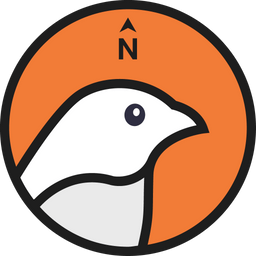Muang Pam Village is an ethnic Kayan or Pakakayan settlement that migrated from two main areas: Mae Yan village in Pai district and Huai Pu Ling in Mueang district around 1957. The village was officially recognized in 1961 and originally consisted of 18 households. As of 2012, it has grown to 114 households with a population of approximately 570 people. According to local tales, the area was previously inhabited by the Lawa people, evidenced by the ruins of an ancient city near an old stupa ("chedi") and in the vicinity of the fish palace and Huai Rai cave. The Lawa made way for the Tai Yai people during World War II, as the Japanese troops used this region as a route for advancing into Burma. Following the exit of the Lawa, the Tai Yai settled in areas like Sob Huay Pa Muang, eventually leading down to present-day Muang Pam. **Ecosystem** Muang Pam Village is located on the foothills and has been a permanent settlement since 1961. The villagers practice traditional rice production through terraced farming, complemented by upland rice farming and rotational cropping. The village's boundaries are well-defined, adhering to traditional production rights established long before the area was designated as a conservation zone or wildlife sanctuary. The villagers primarily engage in subsistence farming, growing crops for their own consumption, raising livestock, and foraging for wild vegetables. Fishing in the local streams is also common, with rice being the staple crop. **Cultivation Areas** 1. **Terraced Rice Fields**: Rice is cultivated on terraced fields with reliance on rainwater, with planting typically starting in late June. 2. **Rotational Upland Farming**: Farms are divided into plots, with each household managing about 4-5 plots for growing various vegetables in the same area during the growing season. After harvest, the cultivation rotates to different plots, cycling every five years. 3. **Upland Rice Cultivation**: Planting begins in March, using varieties such as "Bue Perkham" or "Bue Lork Khob," "Bue Chiang Dao," and "Bue Aw Sah." 4. **Gardens**: Residents plant bananas, corn, passion fruit, pineapples, lemongrass, ginger, galangal, and various vegetables. **Cultural Traditions** The Kayan people of Muang Pam maintain several long-standing local traditions. These include annual festivals within the village as well as those associated with agricultural practices. **Agricultural Traditions:** 1. **Headwater Ceremony**: Held in months 6 and 7, this annual ceremony seeks forgiveness and blessings from river and forest spirits, asking for abundant water and rice. Only households utilizing the same water source participate, avoiding overlap with the Yi Khoe ceremony. 2. **Spirit Farming Ceremony**: Known as "Sae Khue Sae Chee" in Kayan language, this is held in month 8, starting with a chief who conducts the ceremony before others may join. 3. **New Rice Celebration**: Conducted between months 10 and 12, households will celebrate individually, with rituals including hand binding before milling rice during the first month (January) after harvesting. 4. **Water Spirit Ceremony**: Conducted during illnesses thought to stem from spirit mischief, this gathers offerings to appease various spirits. **Village Festivals:** 1. **Hand Binding Ceremony**: Conducted in months 2 and includes binding hands on the 13th and 14th night of the lunar month, led by the village chief (Yi Khoe). 2. **Navel Forest Ceremony**: Involving a baby's placenta, believed to connect the child’s spirit to a sacred tree. 3. **Spirit Calling Ceremony**: Performed by shamans to summon spirits from ancient trees and subsequently bind the person’s hands. 4. **Marriage Traditions**: Kinship is traced through the female lineage, with the bride's family traditionally proposing to the groom's family. 5. **Housewarming Ceremony**: Possible at any time except for April, which is considered an inauspicious month for such celebrations. 6. **City Spirit Ceremony**: An annual event conducted before agricultural planting begins. 7. **New Year Celebration**: Involves paying respects to ancestors, parents, and visiting temples, coinciding with Thailand's traditional New Year. **Highlights and Tourist Activities** **Tourist Attractions:** Within Muang Pam Village: - Explore architectural designs of homes, space utilization, and building materials. - Discover local wisdom in weaving, basket-making, herbal knowledge, and storytelling. Surrounding the village: - **Fish Conservation Area**: Designed to manage fishing activities, this zone prohibits residents from fishing here, allowing it to serve as a breeding ground, ensuring a year-round fish supply for locals. - **Community Forest**: A preserved forest with diverse flora, previously celebrated with two tree ordination ceremonies. - **Salt Lick Area**: A location rich in salt soils attracting various wild animals and a grazing area for buffaloes. - **Rotational Farms**: A chance for tourists to learn about local food diversity and sustainable farming practices. - **Yao Cave**: A 500-meter-long cave featuring a small waterfall, shrimp, bats, and green grasshoppers. - **Stupa Cave**: Housing a 2-meter wide and 2.5-meter tall stupa, previously under restoration by a resident monk. **Tourist Activities Include:** 1. Walking tours of the village. 2. Visiting homes showcasing traditional crafts. 3. Hands-on workshops in crafts such as weaving, basket-making, and embroidery. 4. Engaging activities with local school children. 5. Nature hikes exploring the forest. 6. Learning about rotational farming systems. 7. Studying cave ecosystems (currently under review). 8. Fishing with local villagers. 9. Bamboo rafting on the Pam River.
Photo Credit: facebook : บ้านเมืองแพม CBT Muang Paem
Ban Mueang Pam Community
Province: Mae Hong Son
Reviews from Members
Be the first to review this place
Contact Information
Phone Number
0961472719
Website
https://sites.google.com/site/cbtinmaehongson/banmuangpaem

